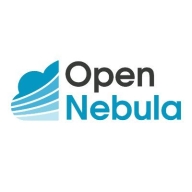

OpenNebula and Cisco Intersight are competing cloud management solutions. OpenNebula is known for its cost-effectiveness and support, while Cisco Intersight boasts advanced functionality and comprehensive management capabilities, making it better suited for enterprises.
Features: OpenNebula's lightweight infrastructure management, edge computing capabilities, and integration flexibility are notable. Cisco Intersight offers advanced automation, continuous delivery, and seamless integration with other Cisco technologies.
Room for Improvement: OpenNebula lacks some enterprise-level automation features and could benefit from enhanced scalability options. Its user interface, while user-friendly, might need more customization options for complex needs. Cisco Intersight's high price might deter small businesses, and its complex setup can be time-consuming. Documentation could be improved for easier user onboarding.
Ease of Deployment and Customer Service: OpenNebula supports straightforward deployment processes suitable for smaller operations and offers responsive customer support. Cisco Intersight is tailored for large-scale environments, with extensive vendor support, though setup can be more demanding initially.
Pricing and ROI: OpenNebula provides lower setup costs and a quick return on investment due to its simplicity. Cisco Intersight, despite a higher price, offers a significant ROI for enterprises through enhanced manageability and reduced operational overhead.
| Product | Market Share (%) |
|---|---|
| OpenNebula | 5.7% |
| Cisco Intersight | 2.2% |
| Other | 92.1% |


| Company Size | Count |
|---|---|
| Small Business | 4 |
| Midsize Enterprise | 4 |
| Large Enterprise | 7 |
| Company Size | Count |
|---|---|
| Small Business | 7 |
| Midsize Enterprise | 6 |
| Large Enterprise | 3 |
Cisco Intersight is Cisco’s systems management platform that delivers intuitive computing through cloud-powered intelligence. This platform offers a more intelligent level of management that enables IT organizations to analyze, simplify, and automate their environments in ways that were not possible with prior generations of tools. This capability empowers organizations to achieve significant savings in Total Cost of Ownership (TCO) and to deliver applications faster, so they can support new business initiates. The advantages of the model-based management of the Cisco UCS platform plus Cisco Intersight are extended to Cisco UCS servers and Cisco HyperFlex and Cisco HyperFlex Edge systems. Cisco HyperFlex Edge is optimized for remote sites, branch offices, and edge environments.
OpenNebula provides the most simple but feature-rich and flexible solution for the comprehensive management of virtualized data centers to enable private, public and hybrid IaaS clouds. OpenNebula interoperability makes cloud an evolution by leveraging existing IT assets, protecting your investments, and avoiding vendor lock-in.
OpenNebula is a turnkey enterprise-ready solution that includes all the features needed to provide an on-premises (private) cloud offering, and to offer public cloud services.
We monitor all Cloud Management reviews to prevent fraudulent reviews and keep review quality high. We do not post reviews by company employees or direct competitors. We validate each review for authenticity via cross-reference with LinkedIn, and personal follow-up with the reviewer when necessary.